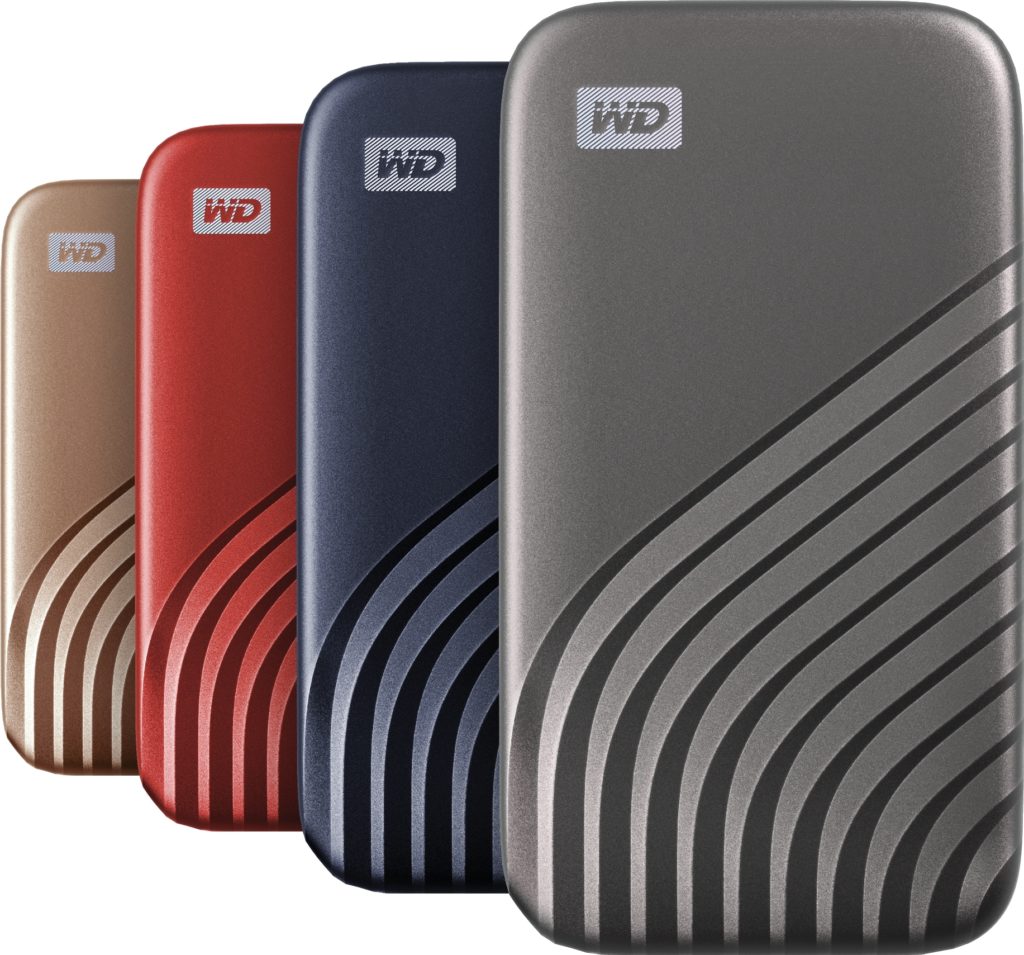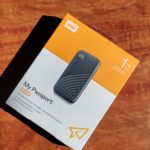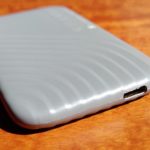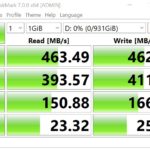It used to be the case that if you wanted to take a lot of files with you between two locations, you used a USB stick.
These days though the sheer number and quantity of files people need to transport requires faster speeds than a USB stick can support. Enter portable SSD drives. They’re fast, light, thin, small and quite affordable … and did we mention fast?
In this review we’re having a look at a new mid to high end player, the Western Digital (WD) My Passport SSD 2020 with 1TB of NVMe storage protected by password backed 256-bit AES hardware encryption.

Unboxing
Inside the box you’ll find the drive, some paperwork and a USB 3.2 Gen 2 C to C cable with a USB-A adaptor.
It’s very important that you don’t lose this cable because while all USB-C to C cables have the same shape connector, they’re capable of vastly different transfer speeds.
That being the case WD should really put their logo on cable and the adaptor as well as ideally the USB speed it supports. The drive itself has an anodised aluminium top cover for durability but disappointingly a plastic bottom and comes in grey, blue, red and gold versions.
The rounded edges make it feel like a pebble and feel quite comfortable in a jeans pocket. One nice thing to have would be an indicator light to show when the drive is being used.
Specs & What It’s Good For
Drives like the WD My Passport SSD 2020 are great for people who work on a lot of large files like photos, video or audio and need to take them to clients or swap them with colleagues.
Also cloud backups are great but for true peace of mind and faster access to backup files on call it’s best to have your own daily backup that’s not permanently connected to your computer. This is especially handy if you fear your computer will get infected by malware.
If you use Windows on your computer the WD’s Discovery software provides backup, encryption and password protection. On a Mac you can use Time Machine for the backups and WD Security for Mac to password protect and encrypt.
Outside of work another great use case is for parents of babies and young children. This drive is an easy way to copy lots of photos and videos of the kids to share with grandparents, uncles and aunties who have slow internet access so you can’t send them images/videos over the internet.
- Available Capacities: 2TB, 1TB, 500GB
- Dimensions: 9mm x 55mm x 100mm
- Weight: 45.7 grams
- Operating Temperature: 0°C to 45°C
- Storage Temperature: –20°C to 65°C
- Interface: USB 3.2 Gen-2 (10Gb/s); backwards compatible with USB 3.0 and USB 2.0
- Connection: USB Type-C
- Format: Preformatted exFAT for PC and Mac compatibility; Can be reformatted and re-partioned as you wish
- Software: WD Discovery software for backup and password protection. Internet activation required
- Operating Vibration: 5.0 gRMS, 10-2000 Hz
- Colours Available: Gray, Blue, Gold, Red
- Compatibility: Windows® 10, Windows 8.1 operating systems, macOS Catalina, Mojave, or High Sierra, Requires reformatting for other operating systems, Compatible – USB 3.2 Gen-2 and USB-C (USB-A adapter for older computers)
- Limited Warranty: 5 Years
Testing
| Current Name | Prior Name | Top Theoretical Speed |
|---|---|---|
| USB 3.2 Gen 2×2 | USB 3.2 | 20Gbps |
| USB 3.2 Gen 2 | USB 3.1 | 10Gbps |
| USB 3.2 Gen 1 | USB 3.0 | 5Gbps |
The theoretical top speed of USB devices is quite different from the real life top speed which is roughly about 10% of theoretical. USB 3.2 Gen 1 manages about 400-500MBps in real life, Gen 2 can achieve about 1000MBps and Gen 2×2 about 2000MBps. This is shown by my tests with the Western Digital My Passport SSD 2020 connected to 2015 and 2018 model Dell XPS 13 laptops.
The SSD’s in these laptops are capable of transferring data much faster than the USB 3.2 Gen 1 port can handle so CrystalDiskMark tests on both laptops result in similar speed results as the port transfers at it’s max throughput.
Western Digital says it’s quoted speeds were based on tests run on a ASUS ROG STRIX Z270E Gaming PC running Windows 10 Pro(64-bit) with an Intel Core i7-7700 CPU @ 4.20GHz, 16GB DDR4-3200MHz SDRAM, 1TB WD_Black SN750 NVMe SSD and Asmedia USB 3.2 Gen 2 controller.
The result is shown below:

Fellow Aussie tech reviewer Leigh Stark is lucky enough to have a faster windows computer at home than I have so was able to test the WD My Passport SSD 2020 and achieve close to the quoted 1050Mb read/1000Mb write speeds.
Should you buy the WD My Passport SSD 2020?
The new WD My Passport SSD 2020 has a RRP of $189 for 500GB, $319 for 1TB and $629 for 2TB respectively. The street price is lower though so don’t pay RRP.
Speed is no longer an issue as portable SSD drives are getting so fast the question is will your computer be able to keep up with them?
If you have a computer that is more than 2 years old, you plan on swapping files with other computers that are of a similar age and your budget is tight, then the previous generation Western Digital My Passport or competitor Samsung T5 will serve you well and save some money if you can find old stock on run-out sale.
If your computer is newer and USB-C 3.2 Gen 2 transfer speed capable then you’ll be able to take advantage of the speed offered by the new WD My Passport SSD 2020. The only reason not to buy it is if you really need fingerprint unlock security, in which case buy the Samsung T7 portable SSD instead.
If you’re thinking 1000MBps isn’t fast enough to keep up with your computer and you want a tougher waterproof NVMe SSD then WD’s cousin brand Sandisk has just the thing. The SanDisk Extreme Pro Portable SSD v2 available in Australia by November will cost you a premium price but has an IP55 rating and at at 2000MB/s is capable of double the speed of the Western Digital My Passport SSD 2020 and Samsung T7.

Disclosure Statement
WD has allowed Ausdroid to retain this drive for ongoing testing and use as an off site clone of cloud storage












